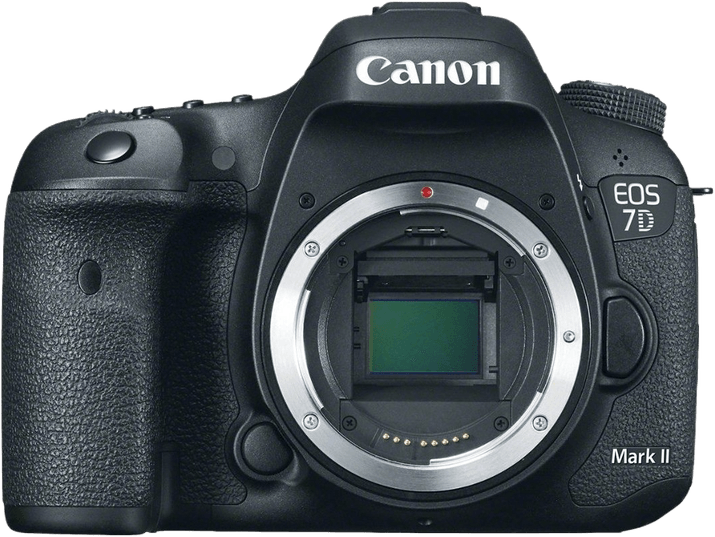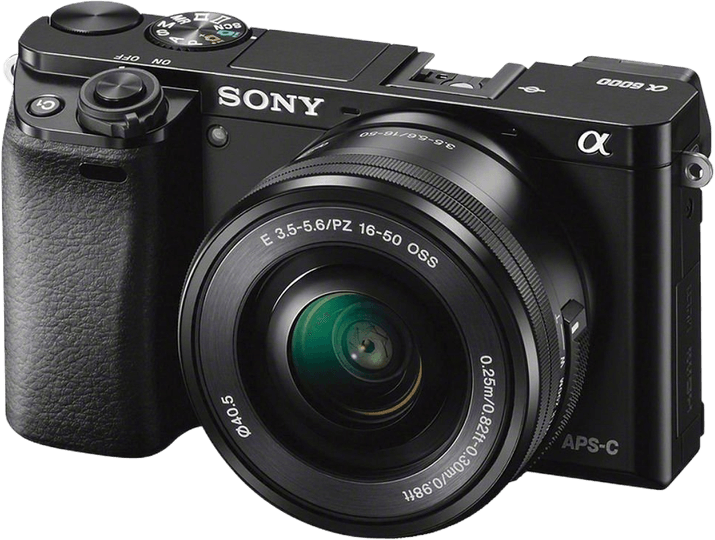Canon EOS 7D Mark II vs Sony a6000 Comparison
Canon EOS 7D Mark II

Sony a6000

The Canon EOS 7D Mark II edges out the Sony a6000 with a score of 60/100, just 3 points ahead of the Sony’s 57/100. Both cameras, released in 2014, share some common specifications. They both have the same launch year and announcement dates. However, the Canon EOS 7D Mark II is a DSLR camera with a heftier price tag of $1800, while the Sony a6000 is a mirrorless camera at a more affordable $799.
The Canon EOS 7D Mark II excels with its larger size (149 x 112 x 78mm) and heavier weight (910g), providing a more professional feel. On the other hand, the Sony a6000 has its advantages with a compact size (120 x 67 x 45mm) and lighter weight (344g), making it more portable and travel-friendly.
Considering these factors, the Canon EOS 7D Mark II is better suited for professionals seeking a robust camera, while the Sony a6000 caters to those who prioritize portability and affordability.
Canon EOS 7D Mark II vs Sony a6000 Overview and Optics
The Sony a6000 wins the optics comparison with a score of 67/100, while the Canon EOS 7D Mark II scores 61/100. Both cameras share some common specifications, such as having a CMOS sensor, APS-C sensor size, and no image stabilisation. Additionally, they have similar shooting speeds with the Sony a6000 at 11 and the Canon EOS 7D Mark II at 10.
The Sony a6000 surpasses the Canon EOS 7D Mark II in several aspects. It has a higher megapixel count at 24.3, compared to the Canon’s 20.2, allowing for more detailed and sharper images. The a6000 also has a higher DXOMARK score for its sensor at 82, while the Canon scores 70, indicating that the Sony camera’s sensor performs better in terms of dynamic range, color depth, and low-light capabilities.
On the other hand, the Canon EOS 7D Mark II has its advantages as well. It features a Dual Digic 6 processor, which provides faster processing and better performance in certain situations compared to the Sony a6000’s Bionz X processor. Additionally, the Canon camera uses the EF-S lens mount, which gives access to a wider range of lenses compared to the Sony E mount.
To conclude, the Sony a6000 outperforms the Canon EOS 7D Mark II in terms of optics, with a higher score, better sensor performance, and more megapixels. However, the Canon EOS 7D Mark II has its strengths in processing and lens compatibility. Ultimately, the choice between these two cameras will depend on individual preferences and priorities for specific shooting conditions and requirements.
Canon EOS 7D Mark II vs Sony a6000 Video Performance
The Canon EOS 7D Mark II and the Sony a6000 share an identical video score of 56/100, indicating that both cameras have similar video capabilities. They both offer Full HD video resolution with maximum dimensions of 1920 x 1080 and a maximum frame rate of 60fps. Neither camera has built-in time-lapse functionality.
Despite having the same video score, the Canon EOS 7D Mark II is better in some aspects. It has a more robust build and a higher weather resistance, which makes it more suitable for shooting in harsh conditions. Additionally, the 7D Mark II has a more extensive range of lenses available, providing users with greater flexibility when capturing video footage.
On the other hand, the Sony a6000 has its own advantages. It is a lighter and more compact camera, making it easier to carry around and use for extended periods. The a6000 also has an electronic viewfinder, which allows users to preview their video footage in real-time, ensuring that the correct exposure and composition are achieved.
Taking these factors into consideration, both the Canon EOS 7D Mark II and Sony a6000 have strong video capabilities. The choice between the two cameras ultimately depends on the user’s preferences and requirements. Those who prioritize durability and lens options may opt for the 7D Mark II, while users who value portability and real-time video preview may prefer the Sony a6000.
Canon EOS 7D Mark II vs Sony a6000 Features and Benefits
The Canon EOS 7D Mark II wins the comparison with a feature score of 57/100, while the Sony a6000 scores 41/100. Both cameras share some common specifications, such as a 3-inch screen size, lack of a touchscreen, presence of WIFI, and absence of Bluetooth.
The Canon EOS 7D Mark II excels with its higher screen resolution of 1,040,000 dots, compared to the Sony a6000’s 921,600 dots. This difference provides the Canon camera with a clearer and sharper display. Additionally, the Canon EOS 7D Mark II features GPS, allowing users to geotag their photos and track their shooting locations.
On the other hand, the Sony a6000 offers one advantage with its flip screen, which facilitates shooting from various angles and is especially useful for vloggers or capturing self-portraits. However, this single advantage does not outweigh the benefits that the Canon EOS 7D Mark II offers.
To summarize, the Canon EOS 7D Mark II outperforms the Sony a6000 in terms of features, mainly due to its higher screen resolution and the presence of GPS. Despite the Sony a6000 having a flip screen, it does not provide enough advantage to surpass the Canon EOS 7D Mark II. Consequently, the Canon EOS 7D Mark II is a better camera in terms of features.
Canon EOS 7D Mark II vs Sony a6000 Storage and Battery
The Canon EOS 7D Mark II outperforms the Sony a6000 in storage and battery, scoring 65/100 compared to the a6000’s 21/100. Both cameras accept SD, SDHC, and SDXC memory cards, but the 7D Mark II also accepts Compact Flash cards and has two memory card slots, while the a6000 only has one slot and accepts Memory Stick Pro Duo and Pro-HG Duo cards.
The 7D Mark II’s battery life surpasses the a6000, providing 670 shots per charge compared to the a6000’s 360 shots. However, both cameras use different battery types: the 7D Mark II uses the LP-E6N, and the a6000 uses the NP-FW50. Neither camera offers USB charging.
The Canon EOS 7D Mark II’s superior storage and battery life make it the better choice for extended photography sessions and versatile storage options. The Sony a6000, while having a weaker storage and battery score, still provides adequate performance for casual photographers.
Canon EOS 7D Mark II vs Sony a6000 – Our Verdict
Are you still undecided about which camera is right for you? Have a look at these popular comparisons that feature the Canon EOS 7D Mark II or the Sony a6000:

